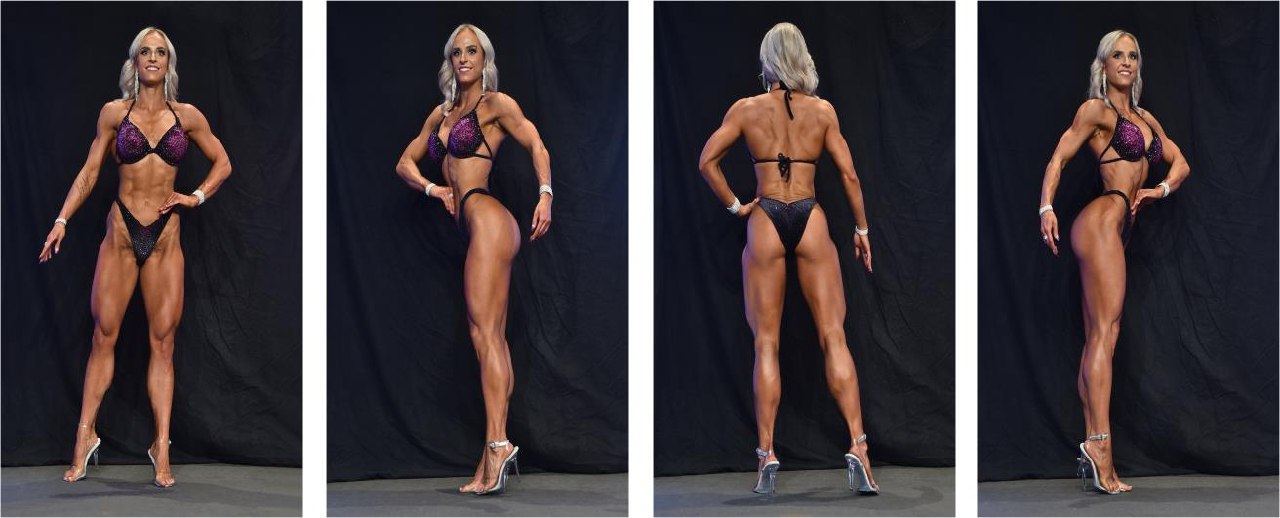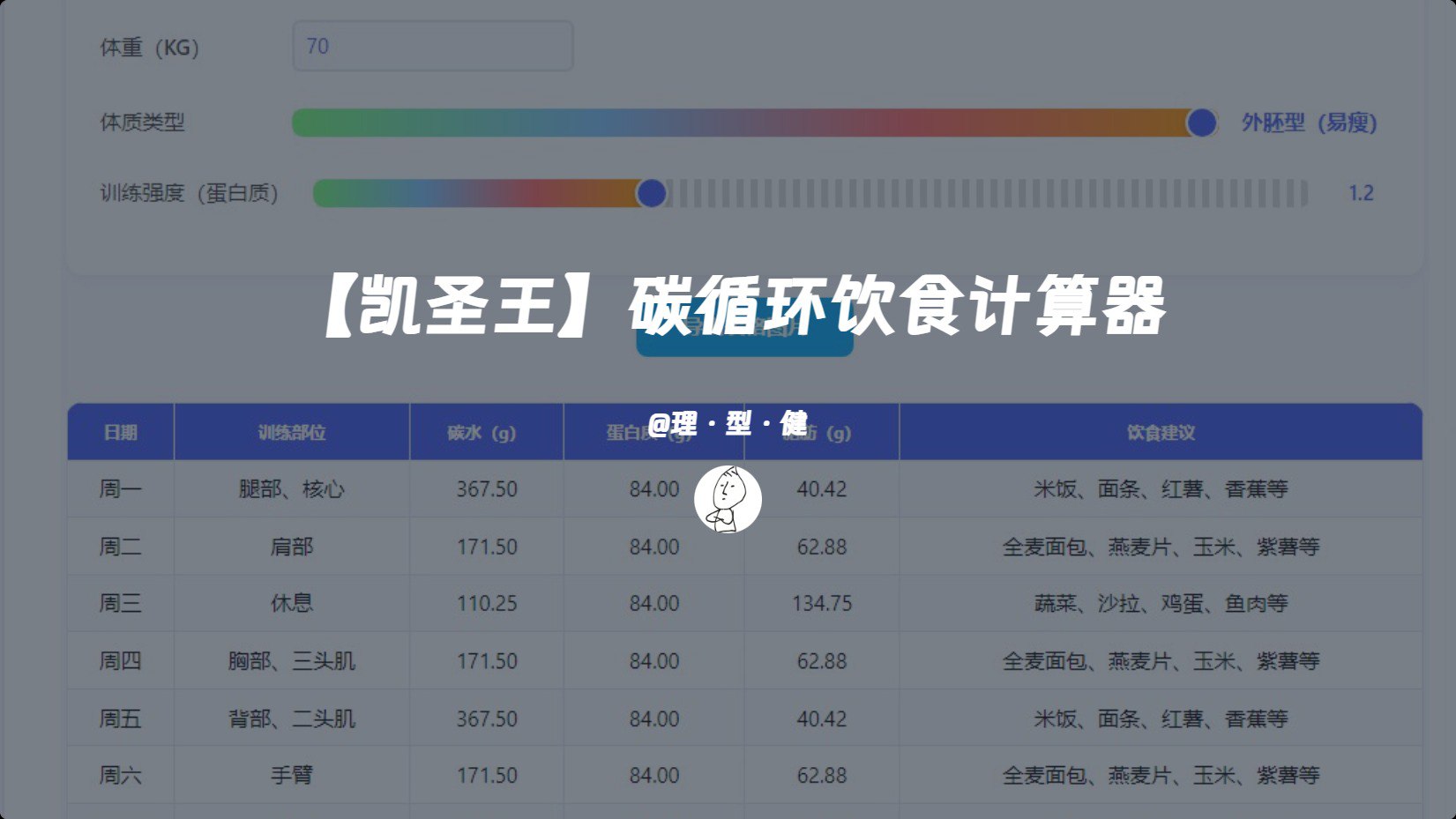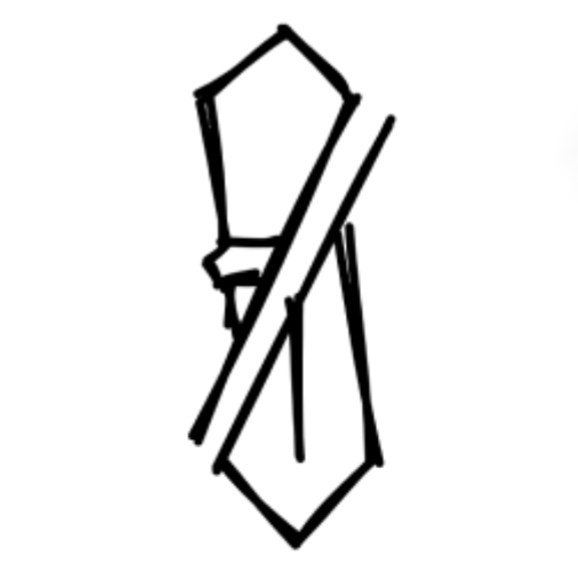IFBB 精英联盟规则:女子健康小姐

IFBB 精英联盟规则:女子健康小姐
李瑶瑶IFBB 精英联盟规则:女子健康小姐

内容声明
本文内容来源于:IFBB FEDERATION RULES
仅供个人学习使用
中文部分为我个人翻译校对,转载请注明来源 理・型・健 —(必应 Bing 可以搜索到)
同系列其它文章:
IFBB 精英联盟规则:通用规则 | 理・型・健
IFBB 精英联盟规则:男子健身模特 | 理・型・健
IFBB 精英联盟规则:男子健体 | 理・型・健
IFBB 精英联盟规则:男子古典健体 | 理・型・健
IFBB 精英联盟规则:男子传统健美 | 理・型・健
IFBB 精英联盟规则:女子比基尼 | 理・型・健
女子健康小姐 Women’s Wellness
官方文件:Women’s Wellness Fitness Rules (2024)
摘要
这份文档是国际健身健美联合会(IFBB) 2024年版女子健体项目的比赛规则。它详细规定了比赛的组织责任、参赛类别、各轮比赛的流程(包括预赛淘汰赛、预赛第一轮和决赛第二轮)、服装要求、评分标准以及颁奖典礼等。规则的核心在于对运动员体型的评判,强调健康、匀称、女性化的体态,而非极度发达的肌肉或低体脂率。文档还包含了关于四分之一转身和I型步行的具体描述和评估方法,旨在确保比赛的公平公正和一致性。总而言之,这份文件旨在为女子健体项目的比赛提供清晰、详细的规范,以促进这项运动的健康发展。
文件目录索引
目录索引(点击展开)
- 第 1 条: 引言
- 第 2 条: 组织者对运动员和代表的责任
- 第 3 条: 组别
- 第 4 条: 轮次
- 第 5 条: 预赛:淘汰轮
- 第 6 条: 预赛和决赛:所有轮次的服装
- 第 7 条: 预赛:淘汰轮的评分
- 第 8 条: 预赛:第 1 轮的展示
- 第 9 条: 预赛:第 1 轮的评分
- 第 10 条: 预赛:第 1 轮的评估
- 第 11 条: 决赛:第 2 轮的服装
- 第 12 条: 决赛:第 2 轮的展示
- 第 13 条: 决赛:第 2 轮的评分
- 第 14 条: 决赛:第 2 轮的评估
- 第 15 条: 决赛:颁奖典礼
- 第 16 条: 决赛:总类别和奖项
- 第 17 条: 团队分类结果和奖项
- 附录 1: 女子健康比赛中四个转向的描述
- 附录 2: 如何评估女子健康四个转向
- 附录 3: 如何进行和评估 I 字走
- 附录 4: 照片
英文目录索引(点击展开)
Article 1: Introduction
Article 2: Responsibilities of Organizers to Athletes and Delegates
Article 3: Categories
Article 4: Rounds
Article 5: Prejudging: Elimination Round
Article 6: Prejudging and Finals: Attire for All Rounds
Article 7: Prejudging: Scoring of the Elimination Round
Article 8: Prejudging: Presentation of Round 1
Article 9: Prejudging: Scoring of Round 1
Article 10: Prejudging: Assessing of Round 1
Article 11: Finals: Attire for Round 2
Article 12: Finals: Presentation of Round 2
Article 13: Finals: Scoring of Round 2
Article 14: Finals: Assessing of Round 2
Article 15: Finals: The Awarding Ceremony
Article 16: Finals: Overall Category and Award
Article 17: Teams Classification Results and Award
Appendix 1: Description of Quarter Turns in a Wellness Competition
Appendix 2: How to Assess Wellness Quarter Turns
Appendix 3: How to Perform and Assess I-walking
Appendix 4: Photographs
分组规则
女子健康(Women’s Wellness)比赛分组规则
分组规则主要依据身高和年龄进行划分,具体如下:
成年组 (Senior Women’s Wellness)
- 分为四个身高类别:
- A 组:不超过 158 厘米 (Up to and incl. 158 cm)
- B 组:不超过 163 厘米 (Up to and incl. 163 cm)
- C 组:不超过 168 厘米 (Up to and incl. 168 cm)
- D 组:超过 168 厘米 (Over 168 cm)
- 分为四个身高类别:
青少年组 (Junior Women Wellness)
- 分为两个年龄段和身高类别:
- 16 至 20 岁(含):一个公开组 (One open category)。
- 21 至 23 岁(含):
- 不超过 163 厘米 (Up to 163 cm)
- 超过 163 厘米 (Over 163 cm)
- 分为两个年龄段和身高类别:
大师组 (Master Women Wellness)
- 按照年龄分为多个公开组:
- 35 至 39 岁(含):一个公开组 (One open category)
- 40 至 44 岁(含):一个公开组 (One open category)
- 45 至 49 岁(含)及以上:一个公开组 (One open category)
- 50 岁及以上:一个公开组 (One open category)
- 按照年龄分为多个公开组:
其他规则
- 比赛组织: 除了世界和洲际锦标赛,只有在至少有 3 名运动员的情况下才能进行比赛。如果少于 3 名,则会在可能的情况下合并组别,但大师组不会合并。
- 世界和洲际锦标赛: 在世界和洲际锦标赛中,一个组别只有在至少有 5 名运动员的情况下才能进行比赛。如果少于 5 名,则会在可能的情况下合并组别。
Women’s Wellness Competition Categories
The Women’s Wellness competition categories are primarily divided based on height and age.
Senior Women’s Wellness has four height classes:
- Class A: Up to and including 158 cm
- Class B: Up to and including 163 cm
- Class C: Up to and including 168 cm
- Class D: Over 168 cm
Junior Women’s Wellness is divided by age and height:
- Ages 16 to 20 (inclusive): One open category
- Ages 21 to 23 (inclusive):
- Up to 163 cm
- Over 163 cm
Master Women’s Wellness has several open categories based on age:
- Ages 35 to 39 (inclusive): One open category
- Ages 40 to 44 (inclusive): One open category
- Ages 45 to 49 (inclusive) and over: One open category
- Ages 50 and over: One open category
Competition Organization:
- Except for World and Continental Championships, a category requires at least 3 athletes to run. If there are fewer than 3 athletes, categories will be combined where possible, but Master categories will not be combined.
- At World and Continental Championships, a category requires at least 5 athletes to run. If there are fewer than 5 athletes, categories will be combined where possible.
比赛轮次
女子健康比赛共分为三个轮次,每个轮次都有其特定的目的和评估标准。
资格赛 - 淘汰轮
- 当参赛选手超过 15 人时进行。
- 主要内容是 四个转向。
- 选手按照号码顺序上台,分两组进行四个转向。
- 评委会评估选手的整体体格,包括比例、对称性、平衡、体型和肤色。
- 前 15 名 选手晋级下一轮。
- 如果选手在台上行为不当,可能会收到黄牌警告,并可能被扣分。
- 如果参赛人数在10人以上,17人以下,IFBB首席裁判可能调整晋级人数,并进行淘汰赛。
资格赛 - 第一轮
- 如果参赛选手少于 7 人,则可能取消此轮。
- 内容包括 四个转向 和 四个转向比较。
- 选手先进行四个转向,之后评委会将选手分组进行比较。
- 评委会根据选手在第一轮的表现给出个人排名。
- 前 6 名 选手晋级决赛。
- 如果选手收到红牌,排名会被下调。
- 如果出现平分,将使用相对位置法打破平局。
决赛 - 第二轮
- 前 6 名 选手参加决赛。
- 内容包括 I 字走 和 两组四个转向。
- 选手先进行 I 字形走步,展示个人风采。
- 之后进行两组四个转向,每次都按照数字顺序,然后再反向进行。
- 评委会根据选手在决赛中的表现给出排名。
- 决赛评分不考虑预赛的得分,每位选手以零分开始。
- 如果选手收到红牌,排名会被下调。
- 如果出现平分,将使用相对位置法打破平局。
The Women’s Wellness competition is divided into three rounds, each with specific purposes and evaluation criteria:
Prejudging - Elimination Round
- This round is held when there are more than 15 competitors.
- The main content is the quarter turns.
- Competitors are brought on stage in numerical order, divided into two groups to perform the quarter turns.
- The judges assess the overall physique of the competitors, including proportion, symmetry, balance, shape, and skin tone.
- The top 15 competitors advance to the next round.
- Competitors may receive a yellow card for inappropriate behavior on stage, which may result in point deductions.
- The IFBB Chief Judge may adjust the number of athletes qualifying to the Semifinals to 10 or 17 if the number of competitors is between 10 and 17, and hold an elimination round.
Prejudging - Round 1
- This round may be canceled if there are fewer than 7 competitors.
- It includes both quarter turns and comparisons in quarter turns.
- Competitors first perform quarter turns, after which the judges group them for comparison.
- The judges give individual rankings based on the competitors’ performance in this round.
- The top 6 competitors advance to the finals.
- If a competitor receives a red card, their ranking will be lowered.
- If a tie occurs, the relative placement method will be used to break the tie.
Finals - Round 2
- The top 6 competitors participate in the finals.
- This round includes I-walking and two sets of quarter turns.
- Competitors first perform I-walking to showcase their personal style.
- Afterward, they perform two sets of quarter turns, each time in numerical order and then in reverse order.
- The judges give rankings based on the competitors’ performance in the finals.
- The final score does not consider scores from the prejudging rounds; each competitor starts with zero points.
- If a competitor receives a red card, their ranking will be lowered.
- If a tie occurs, the relative placement method will be used to break the tie.
着装要求
资格赛和决赛:所有轮次的服装
6.1 淘汰轮和所有其他轮次的服装:
淘汰轮和所有其他轮次(两件式比基尼)的服装应符合以下标准:- 比基尼必须是不透明的两件式。 * 比基尼的颜色、面料、质地、装饰和款式,以及高跟鞋的颜色和款式,都由参赛者自行决定,但以下几点除外。
- 高跟鞋的鞋底厚度最大为 1 厘米,细高跟鞋的高度最大为 12 厘米。不允许穿厚底鞋。
- 比基尼底裤应至少覆盖 1/2 的臀大肌和所有前部区域。只允许在服装的上部使用连接件。比基尼的款式必须得体。
- 服装将在正式运动员注册期间进行检查。
6.2 发型可以自行设计。
6.3 除结婚戒指、手镯和耳环外,不得佩戴珠宝。参赛者不得佩戴眼镜、手表、假发或任何人工辅助体型的物品, 乳房植入物除外。严禁植入物或液体注射导致身体任何其他部位或肌肉的自然形状发生改变,否则可能导致参赛者被取消资格。
6.4 不允许使用可擦拭的仿晒剂或美黑剂。如果晒黑剂可以通过简单擦拭去除,则不允许该运动员上台。可以使用人造身体着色剂和自晒产品。如果由专业公司和合格人员进行,可以使用专业的比赛晒黑方法(喷枪晒黑、舱式喷雾晒黑)。 禁止使用闪光、亮片、有光泽的金属珠光或金色着色剂,无论它们是作为晒黑乳液和/或面霜的一部分还是单独使用。
6.5 严禁在身体上过度涂抹油;但是,可以适量使用身体油和润肤霜。
6.6 IFBB 首席裁判或其委托的官员有权决定参赛者的服装是否符合规则中规定的标准和可接受的审美标准。如果服装不符合标准,运动员可能会被取消资格。
6. Qualification and Finals: Attire for All Rounds
6.1 Attire for Elimination Rounds and All Other Rounds:
Attire for elimination rounds and all other rounds (two-piece bikini) shall conform to the following standards:
* The bikini must be an opaque two-piece. *The color, fabric, texture, ornamentation, and style of the bikini, as well as the color and style of the high-heeled shoes, are at the competitor’s discretion, with the following exceptions.
* The high-heeled shoes shall have a maximum sole thickness of 1 cm and a maximum heel height of 12 cm. Platform shoes are not allowed.
* The bikini bottom shall be cut to cover a minimum of 1/2 of the gluteus maximus and all front area. Attachments are allowed only on the upper part of the garment. The style of the bikini must be tasteful.
* Attire will be checked during the official athlete registration.
6.2 Hair may be styled at the competitor’s discretion.
6.3 No jewelry may be worn except a wedding band, bracelets, and earrings. Competitors shall not wear eyeglasses, watches, wigs, or any artificial aids to body shape, with the exception of breast implants. Implants or fluid injections that cause the natural shape of any other body part or muscle to be altered are strictly prohibited and could lead to a competitor’s disqualification.
6.4 No wipe-off tanning agents or bronzers are allowed. If the tanning agent can be removed by simple wiping, the athlete is not allowed on stage. Artificial body colorants and self-tanning products are permitted. Professional competition tanning methods (spray tan, booth spray tan) are allowed if performed by a professional company and qualified personnel. Glitter, sequins, shiny metallic pearlized or gold colorants, whether as part of tanning lotions and/or creams or used separately, are prohibited.
6.5 Excessive application of oil on the body is strictly prohibited; however, body oils and moisturizers may be used in moderation.
6.6 The IFBB Head Judge or an official delegated by him/her has the right to decide if the competitor’s attire conforms to the standards stated in the rules and to an acceptable aesthetic standard. If the attire does not meet the standards, the athlete could be disqualified.
评分标准
女子健康比赛评分标准详解
女子健康比赛的评分标准贯穿于各个轮次,旨在全面评估运动员的体格、形态、展示和整体形象。以下是各轮次的评分细则:
资格赛 - 淘汰轮
- 主要评估整体体格,包括:
- 比例:身体各部分的均衡程度。
- 对称性:身体左右两侧的相似程度。
- 平衡:整体形态的协调性。
- 体型:肌肉的形状和线条。
- 肤色:皮肤的健康状况和色泽。
- 评分重点:
- 不评估肌肉的分离度或肌肉质量,避免过于强壮或肌肉线条过于明显的体格。
- 前 15 名选手晋级。
- 黄牌警告:如果选手姿势不正确或行为不当,可能会被警告并扣分。
资格赛 - 第一轮
- 综合评估:
- 从整体印象开始,关注发型、身体发展、体型、平衡、对称、皮肤状况、肤色以及运动员的自信、仪态和优雅程度。
- 垂直比例应该正确,但水平比例应该在臀部、臀部和大腿区域显示出稍微大的身体质量。
- 关注通过运动和饮食实现的整体身体基调,身体部位应具有良好而紧致的外观,减少体脂。
- 避免:肌肉分离、线条、低体脂水平或在健美比赛中看到的干燥或密度;避免女性体格比赛中看到的肌肉尺寸和质量。
- 具体评估:
- 身体整体的健美度:通过运动和饮食达到的肌肉紧致度。
- 皮肤的紧致度和色泽:皮肤光滑健康,无橘皮组织。
- 整体形象:发型和妆容与整体形象相协调。
- 评分重点:
- 不追求过度的肌肉发达或瘦削,避免肌肉分离或条纹。
- 评委需从选手上台到下台的整个过程进行评估。
- 强调“健康和健美”的体格,以及具有吸引力的整体形象。
- 前 6 名选手晋级。
- 红牌警告:选手若收到红牌,排名将会下降。
- 相对位置法:如果出现平分,将通过此方法决定胜出者。
决赛 - 第二轮
- 评估标准与第一轮相同:
- 强调身体的整体印象,包括姿势、体格、肤色等。
- 再次评估肌肉的形状但不是分离度和定义度,不过低的体脂水平和不过于干燥的身体。
- 评估选手在 I 字形走步和四个转向中的展示。
- 评分重点:
- 决赛的评估是独立于预赛的,确保每位选手都得到基于其当前状态的公平评估。
- 红牌警告:选手若收到红牌,排名将会下降。
- 相对位置法:如果出现平分,将通过此方法决定胜出者。
总体原则
- 整体形象:注重整体的平衡、对称、优美和健康。
- 避免极端:避免肌肉过度发达、线条过于明显、体脂过低。
- 强调展示:评估运动员的自信、仪态、优雅和舞台表现力。
- “全面包装”:发型、妆容、服装和整体形象相辅相成。
Detailed Judging Criteria for Women’s Wellness Competition
The judging criteria for the Women’s Wellness competition are designed to comprehensively assess athletes’ physique, form, presentation, and overall image across all rounds. Here’s a breakdown of the criteria for each round:
Prejudging - Elimination Round
- Primary focus on the overall physique, including:
- Proportion: The balance between different body parts.
- Symmetry: The similarity between the left and right sides of the body.
- Balance: The harmony of the overall form.
- Shape: The contours and lines of the muscles.
- Skin Tone: The health and color of the skin.
- Key Points:
- Does not assess muscle separation or muscle quality, avoiding overly muscular or sharply defined physiques.
- The top 15 competitors advance.
- Yellow Card Warning: Competitors may receive a warning and point deduction for incorrect poses or behavior.
Prejudging - Round 1
- Comprehensive Assessment:
- Begins with a general impression, focusing on hair, body development, shape, balance, symmetry, skin condition, tone, and the athlete’s confidence, poise, and grace.
- Vertical proportions should be correct, however, the horizontal proportions should display a slightly bigger body mass in the hips, buttocks and thighs area.
- Focus on overall body tone achieved through athletic endeavors and diet, with a nice and firm appearance and decreased body fat.
- Avoid: Muscle separation, definition, very low body fat levels, or the dryness/density seen in bodyfitness competitions; avoid muscle size and quality seen in women’s physique competitions.
- Specific Assessments:
- Overall Body Tone: Muscle firmness achieved through training and diet.
- Skin Tightness and Tone: Smooth and healthy skin, free of cellulite.
- Overall Package: How well the hair and makeup complement the total presentation.
- Key Points:
- Not seeking excessive muscularity or leanness, avoiding muscle separation or striations.
- Judges evaluate the entire presentation, from the moment the athlete steps on stage until they leave.
- Emphasis on a “healthy and fit“ physique and an attractive overall package.
- The top 6 competitors advance.
- Red Card Warning: If a competitor receives a red card, their ranking will be lowered.
- Relative Placement Method: Used to break ties.
Finals - Round 2
- Same assessment criteria as Round 1:
- Emphasis on overall body impression, including posture, physique, and skin tone.
- Re-evaluate muscle shape but not separation or definition, not too low body fat levels, and not an overly dry physique.
- Evaluate the presentation during I-walking and quarter turns.
- Key Points:
- Judging is independent of prejudging rounds, ensuring each competitor is assessed fairly based on their current condition.
- Red Card Warning: If a competitor receives a red card, their ranking will be lowered.
- Relative Placement Method: Used to break ties.
General Principles
- Overall Image: Focus on overall balance, symmetry, grace, and health.
- Avoid Extremes: Avoid excessive muscularity, overly defined muscles, or too low body fat.
- Emphasis on Presentation: Evaluate the athlete’s confidence, poise, grace, and stage presence.
- “Total Package”: Hair, makeup, attire, and overall presentation should complement each other.
附录 1:女子健康比赛中四个转向的描述
引言:
- 评委们请注意,你们是在评判女子健康比赛。 如果女子健康选手展现出极端的肌肉发达、血管显露、肌肉线条分明、分离、干度和/或节食后的精瘦,都是不可接受的,必须扣分。
总体展示:
- 女子健康组别旨在选拔那些肌肉发达但没有肌肉分离、具有运动美感和赏心悦目,且在臀部、臀部和大腿区域略微丰满的女性。
- 评委们需要注意选手在台上的姿势和仪态。整体形象应展现出优雅、女性化和自信。 这在决赛中进行 I 字形走步、在队列中站立以及四个转向比较时尤其重要。
- 选手在队列中站立时,应避免采用紧张的姿势,避免展示肌肉。
队列中的放松姿势:
- 站立时身体挺直,面向评委,一只手放在臀部,一条腿稍微移向侧面。另一只手臂垂在身体一侧。头部和眼睛朝向前方,肩膀向后,挺胸,收腹。
- 在 IFBB 首席评委的口令下,队列中的选手应做出正面姿势。
四个转向:
- 如果选手在受到 IFBB 首席评委的警告后,仍然以不正确的方式进行四个转向或在队列中站立,将被给予黄牌警告。如果继续犯错,将被给予红牌警告,并且排名将下降(每收到一张红牌,排名下降一位)。
- 进行每个四个转向时,选手应保持静止。背阔肌应以自然的方式展现,而不是像健美运动员那样最大程度地收缩。
正面姿势:
- 选手应站立挺直,头部和眼睛朝向与身体相同的方向,一只手放在臀部,一条腿稍微移向侧面。另一只手自然垂在身体一侧,手掌张开,手指伸直且姿态美观。膝盖不弯曲,收腹,挺胸,肩膀向后。
向右转体(左侧面向评委):
- 选手应进行第一次向右转体。左侧面向评委,上身稍微转向评委,脸看向评委。 右手放在右臀部,左臂垂下,稍微向后偏离身体中线,手掌张开,手指伸直且姿态美观。左髋稍微抬起,左腿(靠近评委的一侧)稍微弯曲膝盖,左脚向前移动几厘米,脚尖着地。
向后转体:
- 选手应进行下一次向右转体,背对评委站立。 她们应站直,上身不要前倾。一只手放在臀部,一条腿稍微移向侧面。另一只手垂在身体一侧,稍微向外伸出,手掌张开,手指伸直且姿态美观。膝盖不弯曲,收腹,挺胸,肩膀向后。下背部曲线自然或略微前凸,上背部挺直,头部抬起。选手不允许将上身转向评委,在进行比较时应始终面向舞台后方。
向右转体(右侧面向评委):
- 选手应进行下一次向右转体,右侧面向评委,上身稍微转向评委,脸看向评委。 左手放在左臀部,右臂垂下,稍微向后偏离身体中线,手掌张开,手指伸直且姿态美观。右髋稍微抬起,右腿(靠近评委的一侧)稍微弯曲膝盖,右脚向前移动几厘米,脚尖着地。
INTRODUCTION:
Judges are strongly reminded that they are judging a WOMEN’S WELLNESS competition. The extreme muscularity, vascularity, muscular definition and separation, dryness and/or dieted leanness will not be considered acceptable if displayed by a Wellness competitor and therefore, must be marked down.
GENERAL PRESENTATION:
The Wellness division is intended for women who prefer a muscular physique without muscle separation, athletic and aesthetically pleasing, with a slightly bigger body mass than in Bikini Fitness, especially in the hips, buttocks and thighs area. From this point of view, Wellness is placed somewhere between Bikini Fitness and Women’s Physique.
Judges are reminded that the competitor’s posture and bearing, at all times while onstage, is to be considered. The overall image displayed should demonstrate poise, femininity and self-confidence. This is especially true at all times when the competitor is performing I-walking in the finals, standing in the line-up and during the comparisons of the quarter turns. When standing in the line-up, the competitors shall be warned against adopting a tense pose, displaying the muscularity.
A relaxed stance in the line-up means that the competitor will:
- stand erect, front to the judges, with one hand resting on the hip and one leg slightly moved to the side. Second arm hanging at the side.
- Head and eyes towards the front, shoulders back, chest out, stomach in.
On the IFBB Chief Judge command, competitors standing in the line-up should perform the Front Position.
QUARTER TURNS
An athlete, who despite being pre-warned by the IFBB Chief Judge, performs quarter turns or stands in the line-up incorrectly, will be given a Yellow Card. If continues to do so, she will be given a Red Card and will be moved one place down (for each of the Red Cards received).
Performing each quarter turn, competitors will stand motionless. Latissimus dorsi muscles should be exposed in a natural way, without maximum contraction presented by bodybuilders.
Front Position:
Competitors will stand erect, head and eyes facing the same direction as the body, with one hand resting on the hip and one leg slightly moved to the side. Second hand hanging down along the body, slightly out of to the side, with open palm and straight, aesthetically configured fingers. Knees unbent, stomach in, chest out, shoulders back.
Quarter turn right (left side to the judges):
Competitors will perform the first quarter turn to the right. They will stand left side to the judges, with upper body slightly turned toward the judges and face looking at the judges. Right hand resting on the right hip, left arm hold down and slightly back from the centerline of the body, with open palm and straight, aesthetically configured fingers. Left hip slightly raised, left leg (nearest the judges) slightly bent in the knee, left foot moved forward a couple of centimeters, resting on the toes.
Quarter turn back:
Competitors will perform the next quarter turn to the right and will stand back to the judges. They will stand straight, not leaning the upper body forward. with one hand resting on the hip and one leg slightly moved to the side. Second hand hanging down along the body, slightly out of to the side, with open palm and straight, aesthetically configured fingers. Knees unbent, stomach in, chest out, shoulders back. Lower back curvature natural or with slight lordosis, upper back straight, head up. Competitors are not allowed to turn their upper body towards the judges and should face the back of the stage at all time during the comparison.
Quarter turn right (right side to the judges):
Competitors will do the next quarter turn to the right and will stand their right side to the judges, with upper body slightly turned toward the judges and face looking at the judges. Left hand resting on the left hip, right arm hold down and slightly back from the centerline of the body, with open palm and straight, aesthetically configured fingers. Right hip slightly raised, right leg (nearest the judges) slightly bent in the knee, right foot moved forward a couple of centimeters, resting on the toes.
附录2:如何评判四个转向
评估应全面考虑整体体格。评估应从对体格的总体印象开始,考虑头发、化妆和面部、整体身体发育和形状;呈现匀称且对称发育、完整的体格;皮肤状况和肤色;以及运动员以自信、优雅和从容的态度展示自己的能力。
由于不评估肌肉发达程度和肌肉质量,评委应青睐拥有和谐女性体格、良好姿势、正确解剖结构(包括身体框架、正确的脊柱弯曲、比例良好的四肢和躯干、笔直的腿,不能是弓形腿或膝盖内扣)的参赛者。水平比例(臀部和腰部与肩部的宽度)可能更有利于拥有略大臀部、大腿和臀部的女性。垂直比例(腿与上半身的长度)是关键因素之一。
体格应根据其通过体育活动和饮食达到的整体身体调理水平进行评估。身体部位应呈现出美观和紧致的外观,减少身体脂肪含量,类似于比基尼健身参赛者所展示的。体格既不应过度肌肉发达,也不应过度瘦削,并且应没有肌肉分离和/或条纹。
被认为过于肌肉发达、过于坚硬或过于干燥的体格必须被扣分。
评估还应考虑皮肤的紧致度和色调。肤色应呈现光滑和健康的外观,并且没有橘皮组织。头发和化妆应与运动员所呈现的“整体包装”相得益彰。
评委对运动员体格的评估应包括运动员的整个展示过程,从她走上舞台的那一刻到她走下舞台的那一刻。在任何时候,Wellness 参赛者都必须被视为重点在于“健康和健美”的体格,以引人入胜的方式呈现,令人印象深刻的“整体包装”。
提醒评委,这不是一个形体健身或女子形体比赛。参赛者的肌肉应该有形状,但不能有在形体健身比赛中看到的肌肉分离、清晰度、极低的身体脂肪水平、干燥或坚硬,或者在女子形体比赛中看到的肌肉发达程度和肌肉质量。任何表现出这些特征的参赛者都将被扣分。
The assessment should take the whole physique into account. The assessment, beginning with a general impression of the physique, should take into consideration the hair, make-up and face, the overall body development and shape; the presentation of a balanced and symmetrically developed, complete physique; the condition of the skin and the skin tone; and the athlete’s ability to present herself with confidence, poise and grace.
Since muscularity development and muscle quality is not assessed, the judges should favor competitors with a harmonious female physique, good posture, correct anatomical structure (including body framework, correct spinal curves, limbs and trunk in good proportion, straight legs, not bandy or knock- kneed). Horizontal proportions (hips and waist to shoulder width) may favor women with a slightly bigger hips, thighs and buttocks. Vertical proportions (legs to upper body length) are ones of the key factors.
The physique should be assessed as to its level of overall body tone, achieved through athletic endeavors and diet. The body parts should have a nice and firm appearance with a decreased amount of body fat, similar to this displayed by bikini fitness competitors. The physique should neither be excessively muscular nor excessively lean and should be free from muscle separation and/or striations.
Physiques that are considered too muscular, too hard or too dry must be marked down.
The assessment should also take into consideration the tightness and tone of the skin. The skin tone should be smooth and healthy in appearance, and without cellulite. The hair and makeup should complement the “Total Package” presented by the athlete.
The judge’s assessment of the athlete’s physique should include the athlete’s entire presentation, from the moment she walks onstage until the moment she walks offstage. At all times, the Wellness competitor must be viewed with the emphasis on a “healthy and fit” physique, in an attractively presented, impressive “Total Package”.
Judges are reminded that this is not a bodyfitness or women’s physique contest. The competitors should have shape to their muscle but not the separation, definition, very low body fat level, dryness or hardness that are seen at bodyfitness competitions or muscularity and muscle quality seen at women’s physique competition. Any competitor who exhibits these features is to be marked down.
附录3:如何进行“I字走”
I-walking 的表演方式如下:
• 选手将走到舞台中央,停下并表演自己选择的四个不同姿势。
• 然后,选手将走到舞台后部的队列中。
裁判将评估每位选手在动作中展示形体的程度。在选手走向舞台及沿舞台行走时,将评估他们是否以优雅的方式展现自己。步伐、动作的优雅度、手势、表现力、个性、魅力、舞台掌控力和吸引力,以及自然节奏感都应成为决定每位选手最终排名的一部分。
I-walking is performed in the following manner:
- The competitor will walk to the center of the stage, will stop and perform four different positions of her choice.
- The competitor will then walk to the line-up in the rear part of the stage.
The judges will be assessing each competitor on how well they display their physique in move. Competitors shall be assessed on whether or not they carry themselves in a graceful manner while walking to and along the stage. The pace, the elegance of moves, gestures, “showmanship”, personality, charisma, stage presence and charm, as well as a natural rhythm should play a part in the final placing of each competitor.
附录4:参考照片

官方参考照片,是入门参考,不是最高标准






















